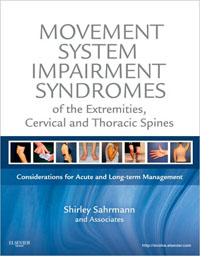Shirley Sahrmann, PhD, first walked through the doors of Washington University’s Program in Physical Therapy (WUPT) in 1956. When she started, the program required two years of college and two years of physical therapy school with graduates earning a Bachelor of Science degree.
“Basically, we were medical cheerleaders,” says Sahrmann, professor of physical therapy, of neurology and of cell biology and physiology. “We would say, ‘Come on! You can do it!’ as we encouraged our patients to learn how to walk down the hall.”
Much has changed in the field over the last half century, and Sahrmann has been at the forefront. She was the first to propose that there is a movement system — a physiological system of the body that incorporates anything involved in movement.

Her latest textbook, Movement System Impairment Syndromes of the Extremities, Cervical and Thoracic Spines, published by Elsevier Mosby, teaches physical therapists to use the movement system to classify and categorize musculoskeletal pain problems, make accurate diagnoses and provide effective treatments.
Each chapter includes signs, tests and diagnoses for movement system syndromes as well as illustrations and photographs of various impairments. It also provides the basic anatomy and kinesiology needed to understand what is normal for those areas.
Heidi Prather, DO, associate professor and section chief of physical medicine and rehabilitation in orthopedic surgery, wrote the book’s foreward, and Sahrmann enlisted the help of 10 WUPT faculty members in writing the chapters.
“This is why I’m smart,” she laughs. “We have all these super-bright people here that are doing things better than I ever could. So everybody wrote a chapter on the body area in which they’re an expert.”
The book also drives home the notion that musculoskeletal pain syndromes are lifestyle issues.
“When I was growing up, you simply ‘got’ diabetes or high blood pressure,” she says. “People think they just happen. So I hope that this book will educate physical therapists to work with patients to show them where the problems originate.”
Sahrmann wants people to understand that many musculoskeletal pain problems are preventable. Before there’s pain, physical therapists can identify underlying structural variations and movement faults, so they can advise clients the best way for them to sit, walk and otherwise move around based on the variations. They can also point out which activities are safe or unsafe.
The book is available at the Bernard Becker Medical Library, the School of Medicine Bookstore and Amazon.com.
Sahrmann’s first textbook, Diagnosis and Treatment of Movement Impairment Syndromes, was published in 2000 and translated into seven languages.